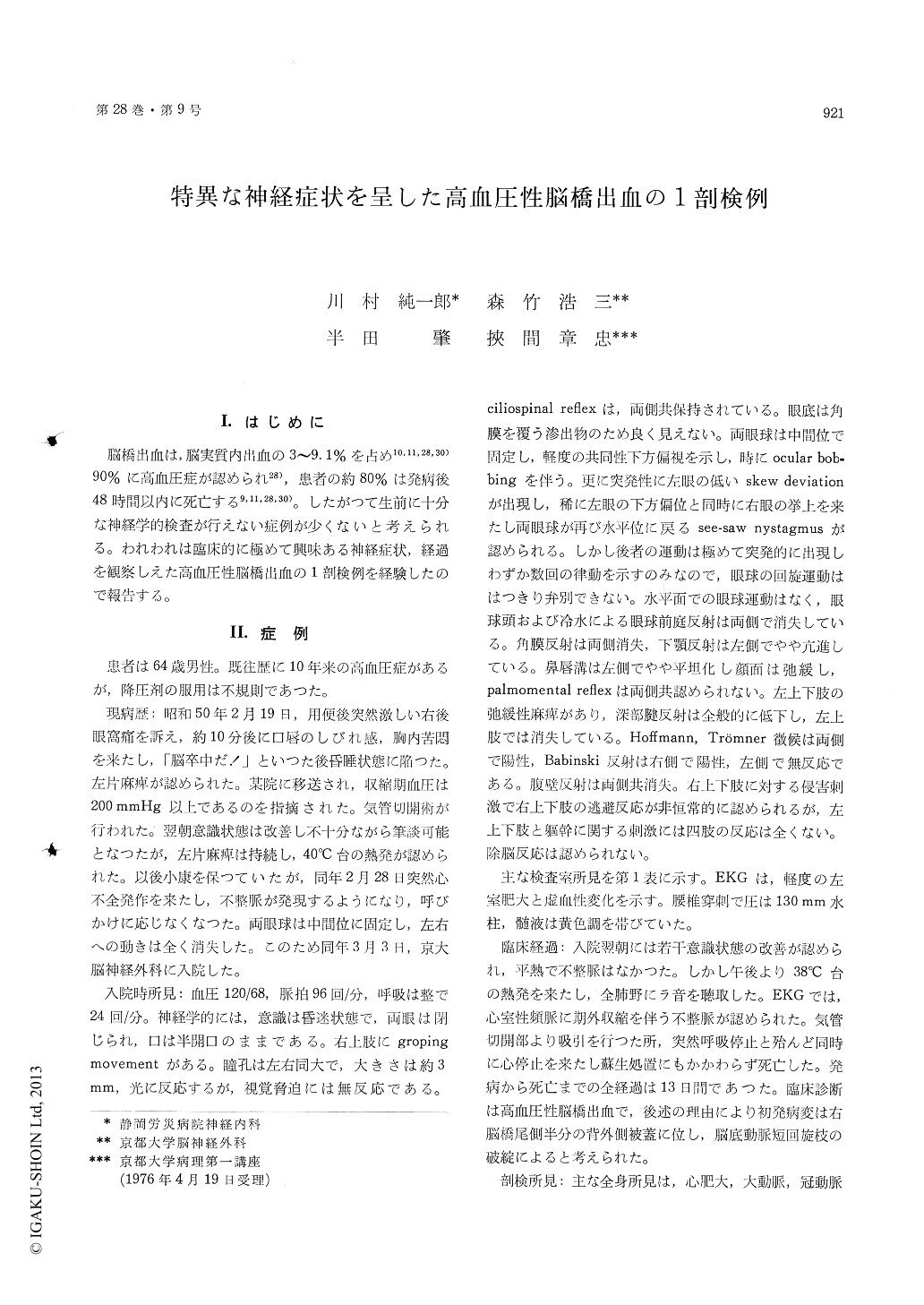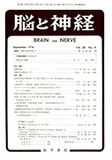Japanese
English
- 有料閲覧
- Abstract 文献概要
- 1ページ目 Look Inside
I.はじめに
脳橋出血は,脳実質内出血の3〜9.1%を占め10,11,28,30)90%に高血圧症が認められ28),患者の約80%は発病後48時間以内に死亡する9,11,28,30)。したがって生前に十分な神経学的検査が行えない症例が少くないと考えられる。われわれは臨床的に極めて興味ある神経症状,経過を観察しえた高血圧性脳橋出血の1剖検例を経験したので報告する。
Among the primary intracerebral hemorrhages 3 to 9.1 per cent of the cases are known to be pontine, and approximately 80 per cent of these are fatal within 48 hours after the onset of the illness. Ninety per cent of the cases with pontine hemo-rrhage are associated with a high blood pressure. Since most of the cases with hemorrhage in this location are rapidly fatal before they are reached by a neurologist for a complete neurological ex-amination, it would be worthwhile to report an autopsy proven case with hypertensive pontine hemorrhage who was thoroughly examined neuro-logically before death.
The patient was a 64-year-old man who presented with a sudden onset of a severe right retro-orbital pain which was shortly followed by loss of con-sciousness and left hemiplegia. His neurological findings were much improved within the next 24 hours, but on the 9th day he suddenly developed a cardiac failure with resultant worsening of his neurological conditions. He became semicomatose and his eye movements in the horizontal plane ceased. He was examined by us 5 days thereafter, at which time a neurological examination showed a semicomatose man with left hemiplegia. His pupils were 3 mm. in diameter, isocoric and reactive to light. The eyes would not move horizontally even with a cold caloric test, but ocular bobbing, paroxysmal skew deviation with the left eye lower than the right and a very occasional see-saw nystagmus were noted. The patient died 13 days after the onset of the illness. The autopsy revealed a large hematoma in the right lower pontine tegmentum which extended both cranially and caudally and toward the midline to involve the upper pontine and lower midbrain reticular form-ation, the right pyramidal tract, para-abducens nuclei, and right vestibular nuclei, among others. In the literature more or less 30 cases of see-saw nystagmus have been reported, most of which were associated with supratentorial lesions. Only 4 cases have been described with infratentorial pathology. Furthermore, an association of skew deviation with see-saw nystagmus was reported only in one such case. The damage to the ponto-medullary vestibular area has been postulated to be responsible for the see-saw nystagmus with the infratentorial lesion.

Copyright © 1976, Igaku-Shoin Ltd. All rights reserved.


